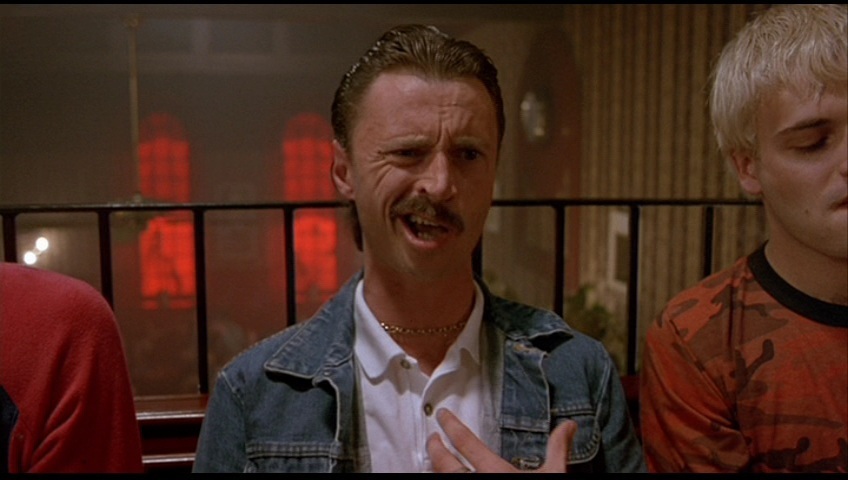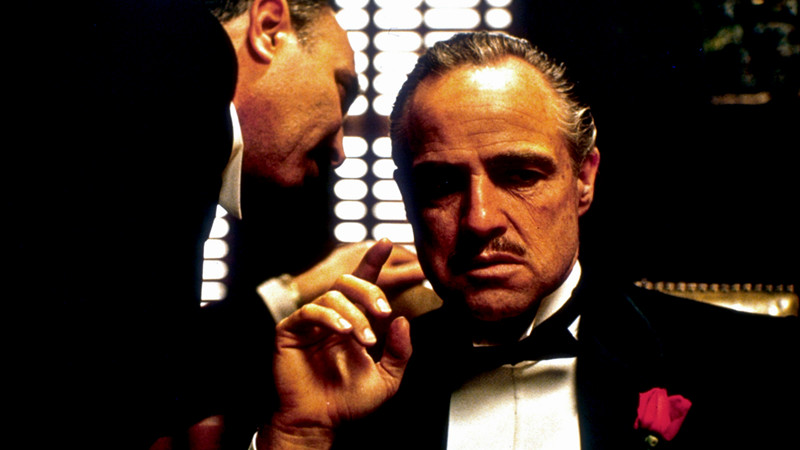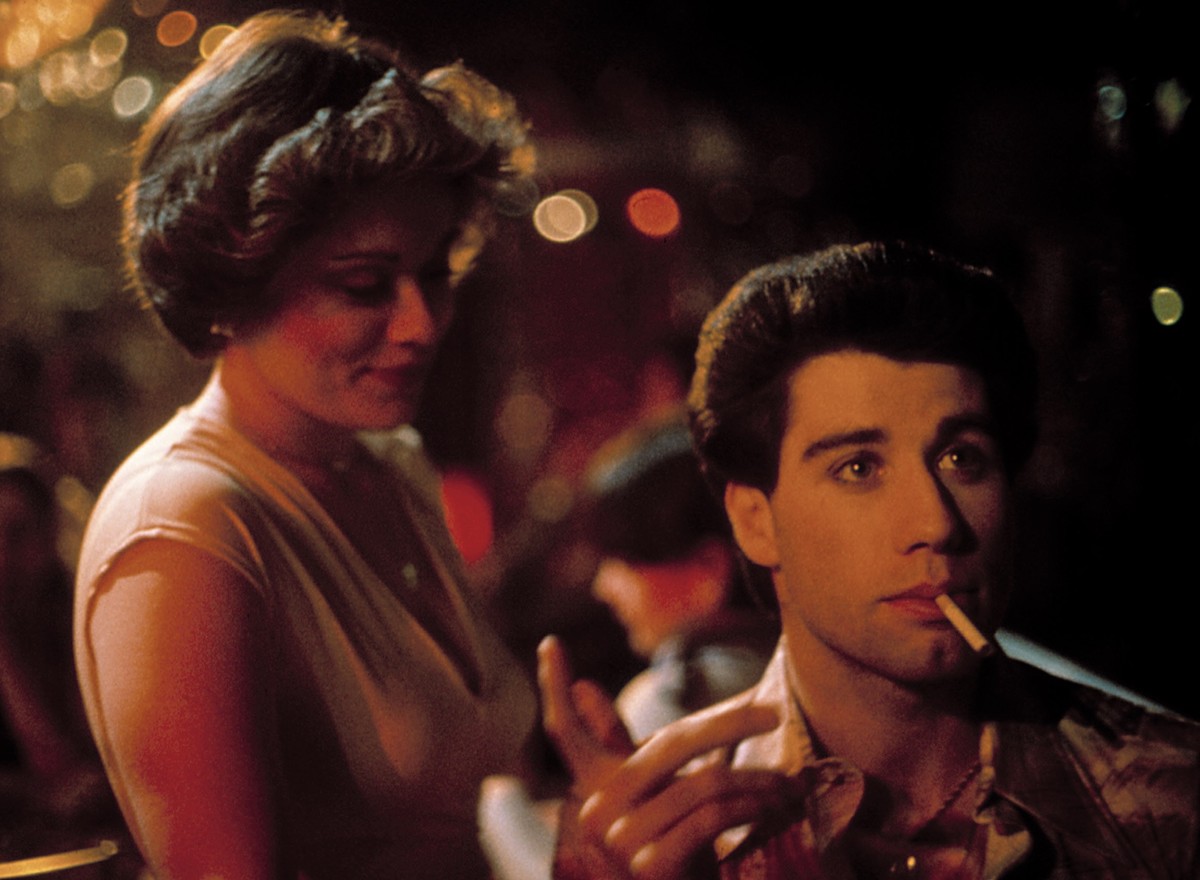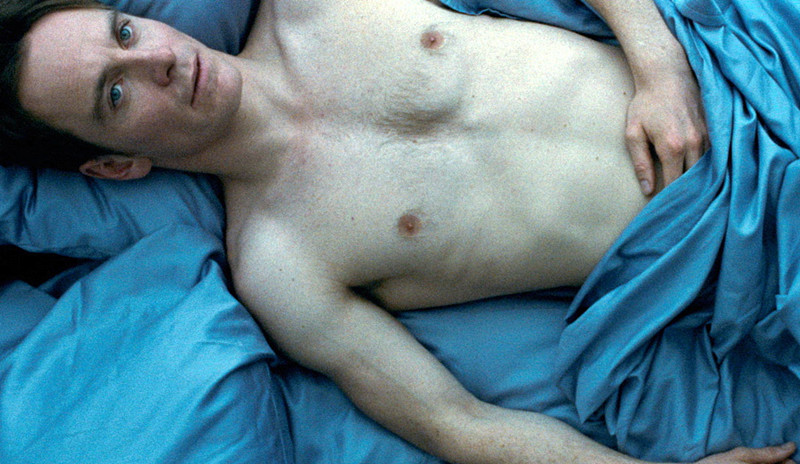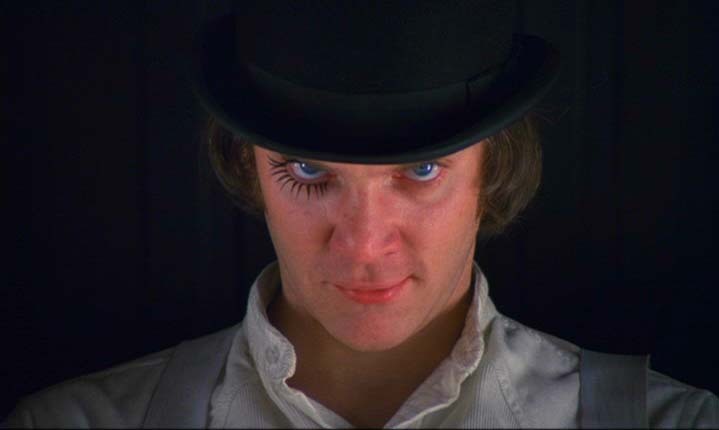
“They should appear like spongy jellyfish: Stinging and mortal at first touch” – Roger Ebert used to say about character introductions.
There is something alluring in the way we recognize ourselves in the tantrums of some characters, in the way we let ourselves be destroy by the compass of their eyes.
You can´t really put a name to it, the automatic motion we let our bodies and minds be submerge into when being enraptured by the unforeseen tragedies and looped aftermaths of the on-screen heroes and villains. It just works the same way an alien abduction does; like a momentary spasm of liquid dreams killed by the intransigence of reality. It is a personal shock of sentimentality no one else is permitted trespassing to.
Notwithstanding, if such abduction is to fulfill its mission, then first, there must be a light luring us into falling right into the trap of its enchanting starlight. So that way, at our most vulnerable state of curious introspection, we can be snatched away into a world of floating wonder.
If the journey of such characters acts out as the spaceship that seizes us, then their introductions are the light that deceives us.
A character is the signature of a film, the expression of its theme, and the expectation of its genre. And if we are not engaged by such patterns from the very first instant such creatures step into the image, well, then the life-span given to them by the duration of the film will be nothing more than the buzz of a passing wasp, instead of the thunder of a warrior’s roar.
1. Once Upon a Time in The West (Sergio Leone, 1968)
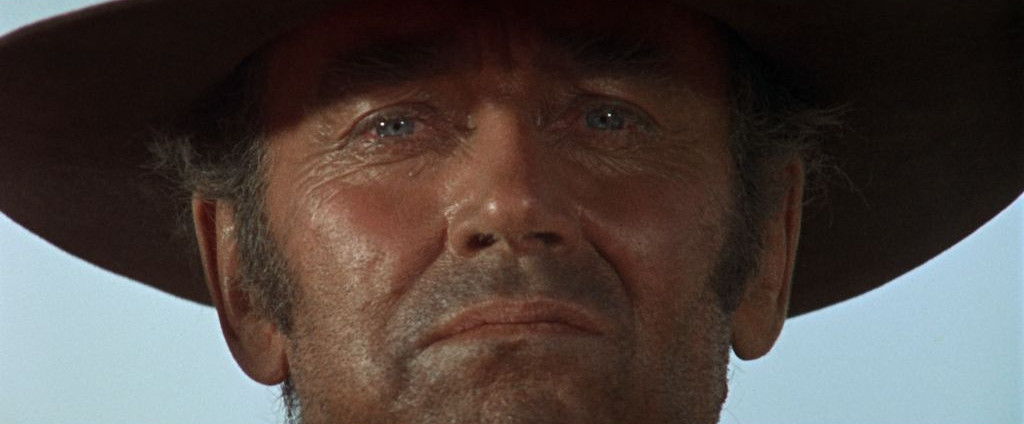
What it can teach you: Character entrances require action.
In the center of what appears to be a forsaken land covered by heat and sand, a family of farmers, all with hair as red as fire, labor peacefully in the preparation of an outdoor feast. There is a quality of secret tenderness in the image, but also a stain of unforeseen disaster we are quite not able to decipher yet. This is no ordinary family, it has been inflicted by loss; the mother is missing in the picture.
There is love among its remaining members, but also unspoken conspiracies. It seems as if they are all carrying not only the weight of the sun, but that of a past remorse.
Suddenly, out of nowhere, and by the rapid whisking of inaudible bullets launched from invisible guns, the family is massacred. A little boy runs out from the house at the sound of the deadly rampage. He runs towards us, and he does so with such force and desperation, that it looks as if his round, freckled face was about to crash against the ephemeral camera before stooping in rigid alertness; before stopping to behold the zigzag panel of dead bodies.
Shadows swiftly coagulate upon the terrain, as if summoned by the boy´s befouling contemplation. This is the conjuring of the perpetrators, five or six phantasmagoric men approaching him in patient hurdling. All of them wear hats that look more like crows with open wings resting over their heads, than dressing ornaments made out of cloth. Their skin is burned, and it melts the same way artificial wax does.
“What should we do with him, Frank” – asks one of the toasted men in regards to the boy standing in front of them.
Frank, the leader of the pack, announces his presence by spitting a brownish substance. It is perhaps, a mixture of half-chewed tobacco and chunks of rotten intestine. Or maybe, what he is spitting out from his insides are moist bits of his soul, liquefying within him due to the hellish heat. Again, this is Frank, and he is our villain.
“Well, now that you have mentioned my name…” – Frank replies.
For a moment, there is a silent sharing of cold looks between Frank and the orphan child, and then…
He shoots the red headed boy and the image cuts to the chaotic breathing of a train.
We won´t see Frank for another long period of time, but his existence has been inserted into our memory like a glare of violent clairvoyance.
This is the west of Sergio Leone, a tarnished landscape of men acting as if bitten by a virulent rancor. All of them carrying the small blames of their actions in the corner of their eyes, bubbling like spider eggs about to burst open in vicious viscosity.
2. Trainspotting (Danny Boyle, 1996)
What it can teach you: Character entrances require contradicting reactions.
Renton and his group of friends spent their days and nights feeding their bloody veins with heroin. They dissolve the hours of such days inside devastated apartments where the air is so clustered with sweat and dung, that it becomes as soupy as brown mud.
All of the members of this kaleidoscopic association are introduced to us, not by enrapturing actions, but through the embroidering of urgent reactions. They all react to their drug infused environments as if being exasperated everywhere they go, by the dead jingles of their own bones.
We first meet Begbie (Robert Carlyle) when telling a story at a bar, of how he beat the shit out of a guy when playing a round of pool, because his victorious game was corrupted by the harassing words and abusing gaze of such guy. He finishes his story and his beer, and he tosses his mug into the air, the same way a five year old would launch a grenade in the middle of school recess thinking it was a water balloon.
The frame freezes and we immediately recognize the truth about the story he was falsely advertising: Hung-over as fuck, unable to hit a single ball, he gets distracted in the middle of his technique by a poor devil opening a bag of chips he was about to have for lunch. Infuriated by such interruption, Begbie walks up to him as if ready to expel the weight of his own guts, and reduces the unfortunate man to a mass of black bruises.
We get back to the bar and the grenade has exploded. The mug hits an innocent woman, bathing her in a soup of her own blood. He pretends to be concerned, and asks for the responsible of such atrocity to come out. A random quarrel begins, and once again, he is ready to react on behalf of his peeper thirst for violence.
3. A Clockwork Orange (Stanley Kubrick, 1971)
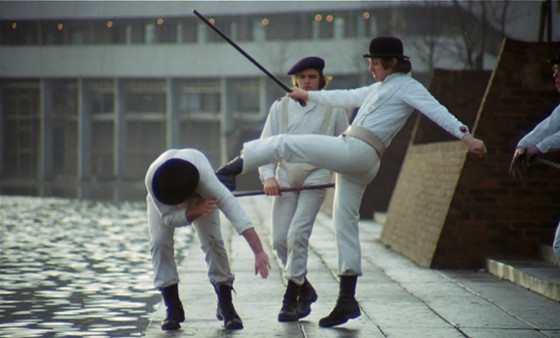
What it can teach you: The character must be elevated to a higher level of recognition with his entrance.
The film opens with the face of Alex. He is staring directly at us.
In the book by Anthony Burgess, the character is supposedly only fourteen years old, but in this adaptation by Stanley Kubrick, there is an enigmatic scribbling twisting the boundaries of his age. He has not the mature recollection of a man, but possesses the dreadful snobbery of no boy.
There is a glare of destruction squirming through his eyes, as if with every blink he was to evoke a specific plague upon the world; perhaps that is why his eyes refuse to flicker, because in a way, he is aware of the power of his aims.
The grin that scratches his mouth has the peaceful danger of hallucinatory sedatives, maybe peyote. “Welcome to the most fuck up ride of your life”-that is the warning manifested by his smile.
A reverential long shot begins to create distance; we are being departed from the depths of his looks in slow, balletic motion. The music comes out in spurts of convoluted notes, and we hear his voice for the first time as the Korova Milkbar is revealed to us as well.
There is an amusing and drilling quaver in his voice, it sounds like a broken clock, or like the chord of a violin ripping in violent execution. It is not coming out from his mouth; it hangs through the soporific air, draining it from the apparent calmness of the place like a lullaby putting monsters to sleep. He is giving us the privilege of navigating through his thoughts. That way, we won’t miss a thing.
He describes the somnolent beauty of what lays ahead. Those three other guys in white sitting next to him and staring at nothing like forgotten puppets are his fellow “droogs”, “that is Pete, Georgie, and Dim”, and they are ready to undone themselves with the cleanness of a nightfall brimming with ultra-violence and tormented consecration.
And we will be there, communicating telepathically with Alex, observing with enchanting morbidity as they unravel on such madness as if testing the air with every step, and exhaling a whiff of beasts with every breath.
4. The Godfather (Francis Ford Coppola, 1972)
What it can teach you: The theme of the film must be allured by the entrance of the character.
“I believe in America”, that is the first line of dialogue we hear when the film opens. It is not expressed by the Godfather himself, his job is not to believe in America, but to rule it from the other side of the spectrum.
The first image of the film is that of a man showered by an intense and exhausting paleness. His features are delineated by a premature decay, the same way a nice ceiling is unfortunately powdered by moths and termites. His accent more than being Italian sounds like a hard lump of nails stuck inside his throat. He speaks of two men beating his daughter senselessly, and going to the police with unfortunate consequences. He demanded retribution. It was denied to him. Now, he is pleading for it.
This is the kind of man that believes in America, but believing is never enough.
“Why did you not come to me first?”-asks Don Vito, when the camera finally points at him for the very first time.
The Godfather stands up and moves through the room with deifying slowness. He is gentle and calm in his expressions, much like the breathing of a sleeping child.
With his iron jaws he chews almost unintelligible psalms about the harsh disrespect the man with the powdered face has perjured upon their friendship, by coming to his daughter’s wedding, and requesting a favor as a distant subordinate and not as a close friend; by calling him Don Vito, and not Godfather. The man´s dull feeling of rage that a few moments ago was lacerating him, gradually dissolves into a solitary and passive hot broth of frustration and redemption.
A lesson here is bestowed for all of us: If you want to believe in America, first and above all, you have to respect the men who rule it.
The man leaves, still tickled by the imposing figure of his rescuer. The door is closed behind him and Don Vito scratches his head; overwhelmed and tired, but accustomed to the everyday psychosis of this business, to the everyday waste of the American Dream.
5. Saturday Night Fever (John Badham, 1977)
What it can teach you: Invite the audience to your character´s world.
In cinema, first images should be moments of euphoria and involvement. They must be so dense and thick in meaning, that the members of the audience should feel that they are using their fingers to depart invisible but material web cobs away from their eyes.
The first image of Saturday Night Fever is one of the Brooklyn Bridge. This is a film about crossing bridges. No, it is a film about the inability of daring such crossings.
The music swells with pulsating rhythm, and a pair of shiny shoes breaks into the motion of the film. Dandy and pompous, they glide upon the ground as if with every step they were willing to spoil it with sexual remorse. This is Tony Manero’s walk through life.
He holds a bucket of paint, but such detail is promptly forgotten, since we don´t really care if he is carrying something with him, or if he is supposed to get somewhere, we just want to see him walk; in the hopes that maybe, after a long period of watching him, our rib veins will become air, our bones will disjoint with the same easiness of strawberry jam on toast, and our limbs will disarrange in flapping puzzles of flesh; and maybe then, just maybe, when we get out to the street, we will be able to walk through life like Tony Manero does.
This character does get somewhere. He works at a paint shop. An old lady has been waiting for him for half an hour. He went to fetch a bucket of specific paint to another hardware store, but on the way back, he simply took his time. No one rushes Tony Manero. He overcharges the adorable granny but convinces her to pay with sweet talk and looming, imploring smiles. He is a dick!
Tony Manero and his walk represent the times of Disco, as well as the world of illusion and glitter we have been invited to by such times. This is a strolling journey of hypnotic charm, with complete disregard towards the shitty destination that is waiting for us.
6. Shame (Steve McQueen, 2011)
What it can teach you: Introduce the flaw of the character as soon as possible.
Michael Fassbinder´s character, at the beginning of Shame, diminished in utterly beautiful nakedness, strolling from the bathroom to his bed, and bathed by the aluminum glow of dawn, looks like a millenarian centaur or a mythological warrior of nostalgic name, ready to pulverize the world with the solemnity of his hanging penis.
The very first images of the film are numbed by ceremonial atmospheres of impassive whiteness and unalloyed sterility, and despite the erotic rampant of Fassbinder’s body, we are mainly choked with awkward heartache, by the smell of his burnt sexuality and the deep decrepitude of his loneliness.
The first time we meet Brandon (Fassbinder), he is lying on his bed, wrapped around in a sea of platinum sheets, and melted in the languid paleness of his own skin. Stiff and arched, he stares at nothing, perhaps the same way a baby does when invaded by a sudden, supernatural burst of lucidity. But Brandon stares not at things with clarity, on the contrary, every morning he wakes up trying to diminish the fuzziness with which he observes everything around him. It is as if he is constantly dangling around, inside a gallery of broken mirrors.
A phone call he refuses to answer, daily masturbations in the shower; rough and completely devoid from enjoyment; cold and desolate grins of dismay employed to flirt with woman in the subway, all mechanisms Brandon self-inflicts to cope with the everyday boredom of his life.
In the first few minutes of the film, this landscape of delusion makes us aware of the flaws of this character: Brandon has decided to move in opposite direction from reality, and in the process, he has made himself immune to all the pleasures born from terrain temptations.
